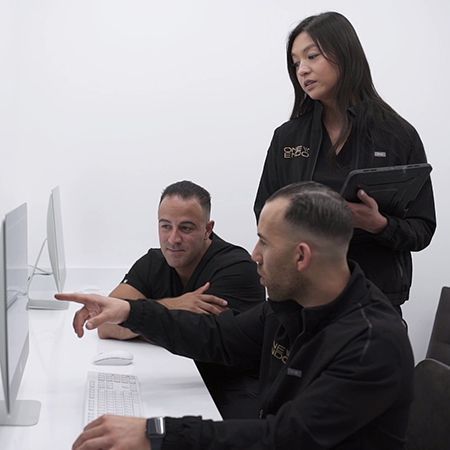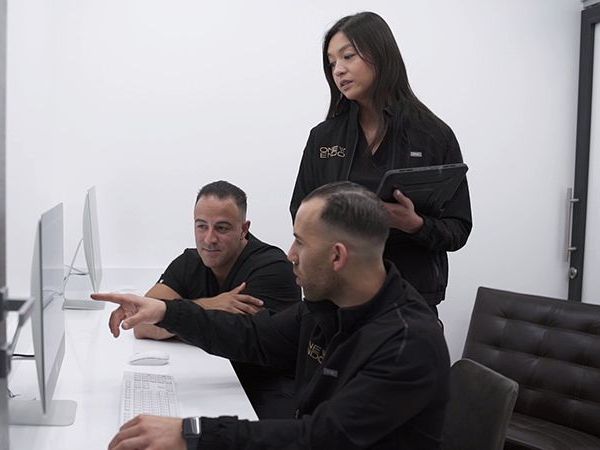apexification
If you've had a traumatic dental injury, using apexification along with root canal treatment can help in saving your tooth.
Get a Consultation With a ONE ENDO® Specialist
Contact Us
Saving teeth with apexification services
apexification & Root canal therapy
Apexification is an endodontic treatment that’s administered alongside root canal therapy to save a tooth that’s been damaged by a traumatic dental injury. It’s usually only required for children who have damaged one of their permanent teeth before it has fully formed. In this process, unhealthy pulp is removed from the tip of the tooth, then special medication is used to treat it and encourage hard tissue to form near the root tip. This closes the tooth and allows it to be treated with a traditional root canal.
Why Is Apexification Necessary?
To understand why apexification is necessary, it’s important to know a bit about the anatomy of a tooth. A normal tooth has a cone-shaped root. This root widens at the crown, then narrows to a closed root “tip.” However, permanent adult teeth that are not developed don’t always have a closed root tip. This is called an “open apex.” These teeth need to continue to grow and develop to gain strength. Normally, this isn’t an issue. As the mouth grows and develops, the tip of the tooth will close.
However, if an immature permanent tooth is damaged by a traumatic dental injury, the open apex may never close. This will cause problems during root canal therapy. A closed root canal is necessary so that the tooth can be cleaned, filled, and restored properly. This is why apexification must be integrated into the treatment process. By creating a calcified barrier and closing the open apex, apexification “closes” the tooth root and allows the tooth to be treated with a root canal.
The Apexification Treatment Process: What To Expect
For many patients, knowing what to expect during treatment helps relieve anxiety and make for a smoother process. When coming in for apexification treatment, you can expect:
WHAT KIND OF AFTERCARE IS REQUIRED?
Similarly to root canal therapy, no special treatment is required to take care of the tooth after the apexification procedure. To avoid biting your cheeks and lips, you may want to avoid eating or chewing for a few hours until your numbing wears off. Other than that, just make sure to brush and floss normally, and make sure to come back to ONE ENDO® as scheduled for follow-ups to make sure that the apexification process is proceeding normally.
RESTORE YOUR HEALTY SMILE TODAY
Are you looking to restore the health of your smile? Scheduling a consultation with the ONE ENDO® team is the first step to discover the right treatment plan for you. Contact us at one of our three convenient locations today and start on the path to your healthy, beautiful smile.
Frequently asked apexification questions
For more information About apexification or to request a consultation, call one of our Three locations Or Contact Us ONline.
Related Services
WHY choose ONE ENDO®
Patients opt for the ONE ENDO® Experience because we are able to offer:

Licensed & Trained Endodontists

Cutting-Edge Dental Technology

Patient-Centric Service

Emergency & Same-Day Care

Financing Options Available

We Accept PPO Insurance

Three Convenient Locations

Friendly & Supportive Staff
READ OUR REVIEWS
I am a total scaredy-cat when it comes to dentists. All my concerns and worries were taken care of by Dr. Chen. She was awesome. Her bedside manner was just the best and really made me feel at ease. Her workmanship was impeccable and I am 24 hrs past my root canal- pain free. Just can’t say enough about Dr. Chen.
Paul G.
Westchester Shore
Dr. Mastroianni and his team are fantastic! I went to their office in severe pain and they addressed it immediately. The technology they used to find the route of the problem was like anything I have seen before. He was able to quickly find the issue and direct me to resolution. I would recommend 10/10!
Tiffany P.
Norwalk
I was referred to One Endo to detect and treat the source of severe tooth pain. Dr. Mastroianni quickly determined the source of the pain, took the time to explain the problem and the options for treatment, and performed an emergency root canal immediately. I highly recommend One Endo - and in particular Dr. Mastroianni.



